Alexander O’Reilly was born in 1723 in Baltrasna, County Meath, and baptised on 24 October. Military tradition ran in the family; his grandfather John O’Reilly was a colonel in the army of James II, whose regiment—‘O’Reilly’s Dragoons’—fought at the siege of Derry. He died on 17 February 1716. His wife was Margaret O’Reilly of County Cavan and they had five children, Brian, Eugene, Myles, Cornelius and Thomas. The latter, father of Alexander, married Rose MacDowell of County Roscommon. Their four children were James, Nicholas, Dominic and Alexander.
Wounded at Campo Santo
Thomas O’Reilly left Ireland with his family and settled in Zaragoza, where Alexander was educated. Aged only eleven, Alexander joined the Spanish army as a cadet in the famous Hibernia regiment, formed in 1710. He was promoted to sub-lieutenant in 1739, the year that war broke out with Britain and Austria. His regiment was sent to Italy to confront the Austrians. He showed such outstanding bravery and ability in several battles that he was promoted to infantry lieutenant. In the battle of Campo Santo he was badly injured and lay all night on the field with other wounded and dead. The following morning, about to be bayoneted by an Austrian soldier, he convinced him he was of a wealthy Spanish family and worth a ransom. He was taken before the Austrian commander, who, as luck would have it, was another Irishman called Browne, who had O’Reilly’s wounds tended to, and returned him to the Spanish side, but with a permanent limp as a result of his wounds.
Peace was signed and O’Reilly returned to Spain, now third in command of the Hibernia regiment. He immediately petitioned the king for a temporary transfer to the Austrian army, no longer at war with Spain, but now with Frederick the Great of Prussia. The Prussian army was renowned for its advanced tactics of manoeuvre and attack, and O’Reilly’s proposal was to study these with the view to their incorporation in the Spanish army. After three years he returned to Spain, decorated for his service. His recommendations were accepted and he was rewarded with the rank of brigadier. He took a leading role in the consequent tactical re-training of the Spanish army.
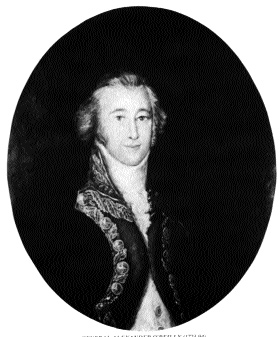
A successful attack on Portuguese-British forces in 1761 confirmed the superiority of the new strategy. Such rapid success, not only as a fighting soldier but also as an expert in military strategy meant that O’Reilly was now seen in high places as someone of talent and potential. This was soon to be put to the test when Spain recovered Cuba in the settlement of the Seven Year’s War.
Spain’s man in Havana
An expedition to retake Havana was planned, and its governor-to-be, Count Ricla, asked that O’Reilly accompany him as his field marshal. Prior to their departure from Cadiz in April 1763, O’Reilly made extensive plans of action, and personally selected the officers to accompany him. They arrived on 3 June in Havana, and his report recalls that on the trip ‘we had an abundance of fresh water, and always a well-supplied officers’ table with fresh meat’. They found the capital in ruins, the dockyard destroyed, houses and shops severely damaged, and every wooden structure burnt to the ground. O’Reilly’s first actions were to study why Havana had been lost to the British so easily. He inspected the fortifications, the state of the army and local militias, with lengthy interviews with all concerned, what he called a long and tedious task: ‘They all bring with them a sealed written statement which I am obliged to read and which actually tells me nothing; it seems more like a brigade of clerks rather than soldiers’. Count Ricla fell ill, and O’Reilly took charge, with visits to all parts of the island to study the militia and defences. His many reports to Spain he give a concise picture of the population, the economy and agriculture.
Cuba had always been a heavy drain on the Spanish exchequer. O’Reilly’s reports indicated the great agricultural potential, excellent climate, high fertility, unrealised by poor government, a faulty justice system, with foreign traders benefiting from any profits and an inadequate shipping connection with Spain. His recommendations to Madrid, largely accepted, included a new justice system, increased agricultural production, with a guaranteed market in Spain, beef production stepped up with the introduction of cattle auctions to stimulate quality and quantity. The defence of the island, in the hands of undisciplined troops and militia, he completely reorganised, with army units returning to Spain every two years, a new cadet force established, and an efficient trained militia. His use of psychology is evident, with the provision of new uniforms for the militia, and the appointment of its officers being confirmed by a certificate signed by the king. For the erection of new fortifications, he met his first serious opposition. The director of fortifications, the engineer Silvestre Abarca, was, like O’Reilly, a man of firm opinions. He felt that with his special knowledge he should actually be put in charge of defences, an idea to which O’Reilly was firmly opposed: ‘According to his pretensions, its like choosing our naval commanders from ship-builders!’ His task complete, he left Cuba in 1764, en route not to Spain, but to Puerto Rico. Such was the praise from Governor Ricla, that he was ordered to the other colony to again revise and re-organise its defences. His chief engineer there was a fellow Irishman, Colonel Thomas O’Daly. On his eventual return to Madrid, he recommended that Irish emigrants be sent to Cuba to strengthen its defences and improve its economy.
Now recognised as a great military strategist who had renewed Cuba as a colony, he was promoted to Inspector of the Spanish infantry, and his military tactics now fully put into practice throughout the army. For his dedication and loyalty, in 1765, he was awarded the order of chivalry ‘Knight of the Order of Alcantara’, a title of the highest prestige, and two years later he was made lieutenant general.
New Orleans re-occupied
The huge territory of Louisiana and New Orleans was also ceded to Spain in the Seven Years War settlement but she was slow in occupying her new acquisition. However the sight of the British flag hoisted in the neighbouring territory obliged Spain to act.
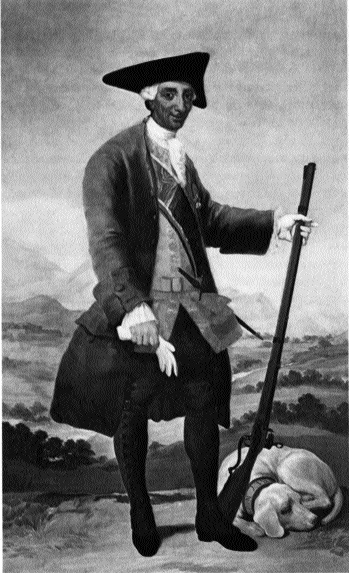
The first governor, Antonio Ulloa, with a too small military force could not maintain possession, and he was ignominiously expelled in 1768 by a rising of the hostile, mainly French, population, incited by the French government. Ulloa was given three days to leave, and this humiliation of Spanish power was viewed in Madrid as a grave threat to the internal stability of their other colonies and an invitation to Britain to take advantage of Spanish weakness. In 1769 O’Reilly was ordered to organise a force to re-occupy Louisiana. His instructions from the king were very clear:
Trusting in your ability and notorious zeal for my royal service, I have destined you to depart for America…to take formal possession of Louisiana…to organise legal proceedings and to chastise, conforming with the law, the exciters and associates of the insurrection…you shall establish military as well as political administration of justice. I entrust you with extensive and full power and authority… and if necessary to use force.
In May 1769, the expedition left Coruña and arrived in Havana on 24 June. After two weeks further preparation there they left with twenty one ships and over 2,000 of the best troops, including many Irishmen from the Hibernia regiment. After a difficult voyage they arrived at the mouth of the Mississippi and took three days to enter the river. A delegation was sent ahead to New Orleans, and O’Reilly formally announced his intention to take possession of the territory in the name of the Spanish king. Recognising the futility of resistance in the face of such a formidable force, the French leaders calmed their factions. A delegation was sent to O’Reilly, pleading leniency, who received it with formal courtesy. Another month passed as the fleet negotiated the delta to arrive at the port of New Orleans and O’Reilly prepared his formal take-over.
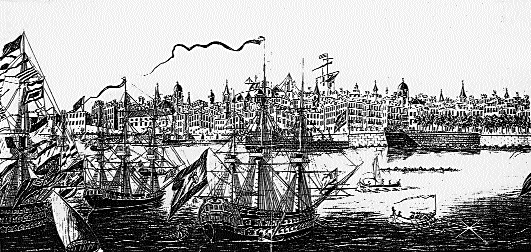
This was a masterpiece of planning, superbly stage-managed to achieve the maximum impact. At sunset a canon was fired, and column after column of Spanish troops in bright new uniforms marched ashore to line three sides of the square, Spanish standards flying, the local troop facing them. On a signal, the troops shouted ‘Viva el Rey!’, the guns of the Spanish ships were fired and fifty canon on shore responded. Then O’Reilly was announced, and the formidable figure came ashore, with his now famous limp. The terrified population stood in silence, uppermost in their minds the reputation of the Spanish for revenge, and all thoughts of rebellion forgotten.
The legend of ‘Bloody O’Reilly’ is born
Spanish law was introduced with an oath of allegiance sworn by all inhabitants. After an investigation, the ringleaders were arrested and tried under Spanish law, and to calm the population a general pardon from the Spanish king was issued. While the leaders at their trial tried to suggest that this had not been an insurrection but a mere local outbreak of discontent, six of them were condemned to the gallows and the others to prison. But a hangman could not be found in the colony and the condemned were shot, O’Reilly reporting to the king that
There is nothing that makes a government milder and more respected than to render to each misdeed the justice which is due it. I recommend this subject very particularly.
The French government was outraged and the legend of ‘Bloody O’Reilly’ was born. He now quickly reorganised defences of the territory with new militia, local government and a new understanding with the local Indians. They were invited to a meeting with O’Reilly who sat with them sharing their peace-pipe and treating them to a spectacular mock battle which of course the ‘Spanish’ won. The Indian chief then asked O’Reilly, ‘Father and great chief sent by the great king of Spain, we hope you will have pity on us, your sons’. Money was forthcoming from Spain to re-establish the economy, and gradually peace and order, now Spanish style, came to the colony. Reflecting his strong views on public morality, O’Reilly instituted new regulations to control behaviour in bars, inns and billiard parlours. Amongst those Irish of the Hibernia regiment who were with him, were Charles Howard, who remained in America and distinguished himself in Florida and Louisiana, Arthur O’Neill who was an outstanding soldier and negotiator with the Indians, and Maurice O’Connor who remained in charge of a militia.
O’Reilly returned to Spain in 1770 with a greatly enhanced reputation, the Spanish court fully approving of his actions, and the king honoured him with the title ‘Count’ O’Reilly. He resumed his duties as Inspector General of Infantry, and then was named military governor of Madrid, which gave him control of all civil and criminal administration. The English traveller and writer, Dalrymple, himself a soldier met O’Reilly in Madrid in 1774 and gave a very negative view of the encounter:
The governor of Madrid is the famous 0’Reilly, and the conduct of this general in New Orleans proves how perfect he is to execute the orders of a government of absolute power. When I went to see him, I found him especially arrogant and imperious. The powers at his disposal mean that he is surrounded by flatterers, but his despotic character makes him hated and despised by the people.
However O’Reilly may have found the Englishman somewhat risible as he suggested when they were strolling in his garden at night that he should wear a hat in case of ‘moonstroke’!
Disaster at Algiers
The ill-fated attack on Algiers in 1775 was the turning point in his military career. Whether because of an exaggerated sense of his own ability, bad planning, the weather, or a superior enemy, the result was a national disaster for Spain and a personal humiliation for O’Reilly. Ever since the expulsion of the Moorish population from Spain in 1492, many fleeing to the North African coast, their descendants throughout the centuries felt a hostility towards their former home. Algiers had long been the source of attacks on Spanish shipping, disrupting commerce in the Mediterranean. The king choose O’Reilly to lead an invasion to occupy and punish the city of Algiers, and an enormous force of over 20,000 troops and every type of armament embarked in some 500 ships from Cartagena. They sailed in June 1775 into a disaster. The Algerians had prior knowledge of an attack, and had assembled their forces along the coast. The planned assault into the bay of the city had to be postponed for over a week due to a change in the weather, so any hope of surprising the enemy was lost. When finally the troops were landed, they were attacked on all sides. The Moors pretended to retreat and the Spanish, fired up by an issue of wine ordered by O’Reilly prior to landing to boost their morale, rushed forward into a series of planned ambushes and were mowed down in their hundreds. The only option was withdrawal, with up to 2,000 Spanish dead, including five generals, not to mention the thousands injured.
The Spanish expedition returned to enormous public outcry and humiliation. News spread throughout the country of the disaster, and public outrage was directed at ‘foreigners’ in general controlling the destiny of Spain, and at ‘Bloody O’Reilly’ in particular, confirming his mala suerte, a person destined to bring bad luck.
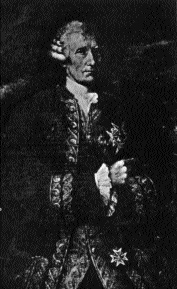

The king was forced to react. His chief minister, Grimaldi, an Italian, who apparently had proposed the invasion, was forced out of office. This was a period of many Irishmen in high places in Spanish government; Richard Wall was ambassador to London and then leader of the government, Bernard Ward was head of finances, Dr Timothy Scanlon was chief naval medical office. For such life was made difficult. However the king still held O’Reilly in high esteem. After a brief banishment, he was appointed captain general of Andalucia and governor of Cádiz in 1776, where he remained for many years. He was now a notorious public figure. Admired or envied by many of his contemporaries, at street level he was scorned, a figure of hate and ridicule:
Oyendo de los moros el tiroteo,
dijo O’Reilly temblando,
‘¡Ay, que me meo!’
[Hearing the shots of the Moors
said O’Reilly trembling,
‘Oh, I’ve pissed myself!’]
Governor of Cádiz
Yet he was a magnificent governor of Cádiz, where he ‘reigned’ from 1780 to 1786. His position included control of all civil and military authorities. Cadiz was the most cosmopolitan city in Europe at that time, with an Italian opera house, a French comedy theatre, and a Spanish classical theatre. There was a permanent population of about 80,000, of whom ten per cent were foreign merchants, mainly Genovese and French, and also a very affluent Irish group. Being the key port connecting Europe with the Americas, the city thronged with sailors and emigrants. Many coffee houses, unheard of in the rest of Spain, were social focus points, and the ‘cosmopolitan buzz’ and liberal attitudes put the city well ahead of its time. O’Reilly quickly took control and immediately began to put to right social injustices and improve the life of the citizens. Within a few days of taking office, he had an official installed in the public market to check the weight of meat being sold and had the price of bread reduced. Public works initiated included paving of the streets, the organised collection of rubbish and a drainage system. New parks were provided along with paseos, walks along the sea walls. The first regular mail coach between Cadiz and Madrid, a four-day journey, greatly improving commercial contacts with the capital. He had an interesting concept of alms to the poor, indicating that the amount donated should be based on ability to pay. Beggars were banned from the streets, and a the same time a home for the poor opened with accommodation and workshops to produce goods for sale. Schools for drawing, mathematics and geometry were opened and a new theatre built. Morals were not neglected. Under the threat of a fine, O’Reilly obliged the citizens to attend mission services by a travelling hell-fire preacher, friar Diego José, who could raise his congregations to hysteria, who would pursue him through the streets, trying to cut off parts of his robe as relics. One of his more exotic edicts was that it was a venial sin for a woman to wear her neckline two fingers’ width below her Adam’s apple, and more than two was a mortal sin!
But O’Reilly’s bad luck persisted. The ill-fated attempt to retake Gibraltar using floating pontoons with mounted canons was a fiasco, and while not directly implicated, as military governor he was considered to have indirect responsibility: the loss of life was blamed on ‘Bloody O’Reilly’ and his bad luck. More was to follow. He had a much-needed bridge built over the river connecting Cadiz and El Puerto de Santa Maria; so many spectators turned up on its inauguration that it collapsed and over 400 were drowned. From his nickname ‘Bloody’ there arose the belief in Cadiz that any one who was lame was unlucky, and the phrase tener el sangui, ‘to have the bloody’—to be unlucky—became current. Indeed long after O’Reilly’s departure, the phrase continued to be used without anyone knowing its origin. His most ambitious plan for the city was to solve its long-standing problem of fresh water supplies. Cadiz being virtually an island, had no natural supply and water had to be transported vast distances at great expense. Apart from the needs of the citizens, the great number of vessels sailing from Cadiz had to be provisioned with sufficient water for the long journey to the Americas. His quite brilliant plan was to refurbish the old Roman aqueduct which ran for over one hundred miles from the mountains in Tempul towards Cadiz An elaborate plan was drawn up by an Italian architect. But vested interests in the old system, the need to raise a special tax to pay for the project, and the jealousy of his enemies in Madrid caused the plan to be delayed for four years and finally abandoned. O’Reilly, who had given such effort to the plan, tendered his resignation to the king on 27 April 1786. While his detractors applauded his fall, the great majority in Andalucia with whom he had worked greatly regretted his departure, and many were the praises in his favour. On the occasion of his official farewell, the city council thanked him for ‘the abundance of provisions, the order of the police, the public decorum, the protection of the arts and of industry. The public benefit which they have had was continuously in mind under your direction’.
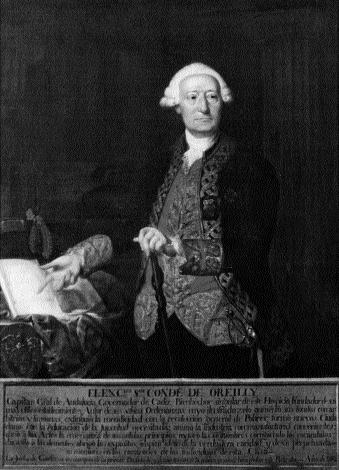
Spain under the Bourbons was a country ruled by enlightened absolutism, tight control from the centre attempting to solve old ills and reform. Alexander O’Reilly was at home in this political ambience, like his king Carlos III he favoured modernisation, public works and industrialisation, but controlled from Madrid. An eighteenth-century traveller, the Baron de Bourgoing, described him as ‘having a special talent to act in a way that all the prevalent circumstances and all his passions contribute to the realisation of his plans’. On his inauguration in Cadiz, he was described as having ‘an imposing presence, a ruddy complexion, blue eyes, a prominent nose, with narrow tight lips indicating his energetic and authoritarian character’. To give some idea of his style, at the foot of one of his instructions are the words: ‘Fulfilling the order, it should be completed with greatest punctuality and exactitude in all its parts’. Another travel writer, Townsend, bemoaning the state of the city of Malaga with its street crime and beggars said: ‘What they need here is an O’Reilly’.
In semi-retirement after his resignation, he was recalled by the king to head the Spanish forces in a campaign on behalf of French royalists. Now in his seventies, he left Madrid in 1794 with his army en route to Alicante, but suffered a heart attack and died in the village of Bonete near Albacete. Jovellanos, the Spanish statesman and writer-philosopher, in his diary recalls the death ‘of poor O’Reilly, who died on the 23rd of March, [and who] was a monster of fortune and received not only praises but insults; his talent, his activity, his intriguing were such that he was made lieutenant general in 1767, aged forty four’.
Samuel Fannin is a researcher dedicated to the Irish communities in seventeenth and eighteenth-century Spain.
Further reading:
J. de Courcy Ireland, ‘General Alexander O’Reilly and the Spanish attack on Algiers, 1775’ in The Irish Sword, vol. XII, no. 47, 1975-76).
E.A. Sullivan, ‘Irish military men serving Spain in North America in the eighteenth and nineteenth centuries’ in The Irish Sword, vol. XXI, no. 86, winter 1999).
L. Benitez Carrasco, Dichos y Cosas de Cádiz (Cádiz 1970).
R.P. Pablo Antón Solé, El Cádiz del Conde de O’Reilly (Cádiz 1967).
